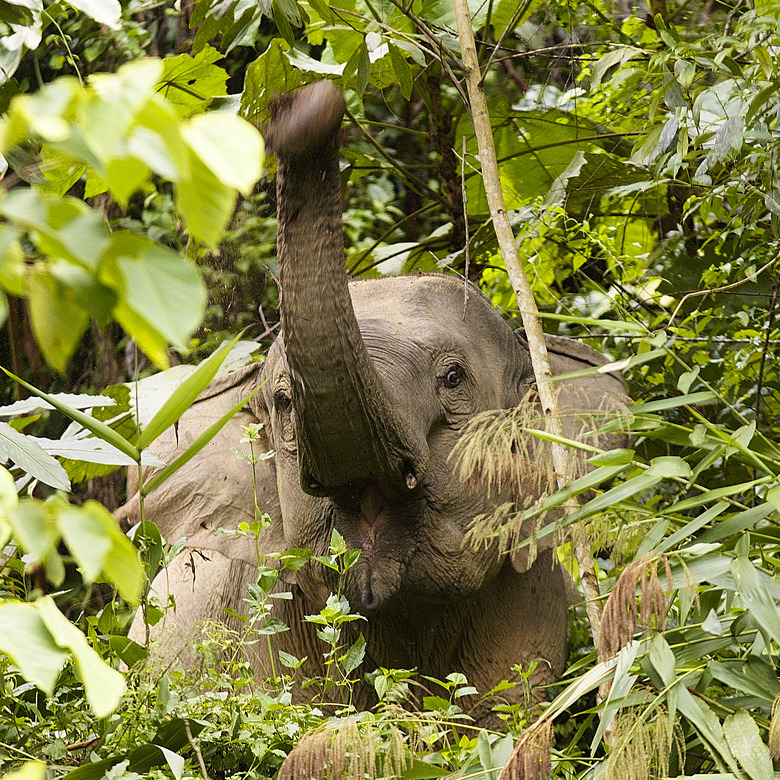Behavioral Adaptations Of Asian Elephants
It's not easy being an elephant. Their big bodies require a lot of fuel and care in order to thrive. Resources like food and water aren't always easy to find in the hot environments where elephants live, especially as human degradation threatens the Asian elephant habitat. Amazingly, though, all kinds of elephants have developed behavioral adaptations over time that help them survive even in hostile environments.
TL;DR (Too Long; Didn't Read)
**TL;DR (Too Long; Didn't Read)**
Asian elephant adaptations include cooling mechanisms with their trunks and ears, growing up to six new set of teeth over a lifetime and communicating via vibrations to compensate for poor eyesight.
Trying to Cool Off and Asian Elephant Habitat
Trying to Cool Off and Asian Elephant Habitat
One of the most important Asian elephants adaptations involves controlling their body temperature. Since the typical Asian elephant habitat is in hot climates in places like Southeast Asia and India, they must find ways to cool themselves and protect their bodies from the sun. One of their adaptations is their ears. With natural selection, elephants ears have grown bigger and floppier in order to work as big fans that the animals can flap to cool themselves.
Another way Asian elephants cool themselves is through their trunk. In addition to using their trunks to pick up their food, they have learned to use their trunks to squirt either cold water or dirt on themselves. The cold water can cool them down, and the dirt or mud can work as a layer to protect their skin from sunburn.
Getting New Chompers
Getting New Chompers
Asian elephants have also adapted when it comes to teeth. The animals are mostly herbivores, and they spend a lot of time chomping down on foods like grass, bark and roots. Breaking down those fibrous plants can be tough on teeth, and just like humans, it's common for those teeth to start to wear down. Unlike humans, though, Asian elephant teeth have adapted over time. The animals sometimes get as many as six sets of teeth throughout their lifetime, with new, fresh ones growing in as older, tired teeth fall out. The adaptation helps keep the large animals healthy and fed throughout their lifetime.
Communicating With Each Other
Communicating With Each Other
The elephant temperament is typically gentle, and the animals are known as being one of the more intelligent beasts on the planet. Some even demonstrate behaviors that suggest they have long-term memories, that they mourn their dead and that they have complex communication with each other. That communication is especially important when it comes to protecting one another. Asian elephants have adapted to be able to use a series of vibrations to communicate with each other.
Part of the reason this adaptation is so important is because Asian elephant eyes are relatively small, and their eyesight relatively poor. Thus, they have adapted their other senses to compensate. The communicative vibrations the elephants share are at too low of a frequency for humans or other potential predators to hear, but the elephants have learned to be able to talk to each other using vibrations. In this way, they can sense that danger is near, even if they can't spot it yet, and warn each other when they are threatened without tipping off the encroaching predator. It's one of the many ways Asian elephants have adapted to life in the wild.
Cite This Article
MLA
Dragani, Rachelle. "Behavioral Adaptations Of Asian Elephants" sciencing.com, https://www.sciencing.com/behavioral-adaptations-asian-elephants-8664980/. 22 November 2019.
APA
Dragani, Rachelle. (2019, November 22). Behavioral Adaptations Of Asian Elephants. sciencing.com. Retrieved from https://www.sciencing.com/behavioral-adaptations-asian-elephants-8664980/
Chicago
Dragani, Rachelle. Behavioral Adaptations Of Asian Elephants last modified March 24, 2022. https://www.sciencing.com/behavioral-adaptations-asian-elephants-8664980/
